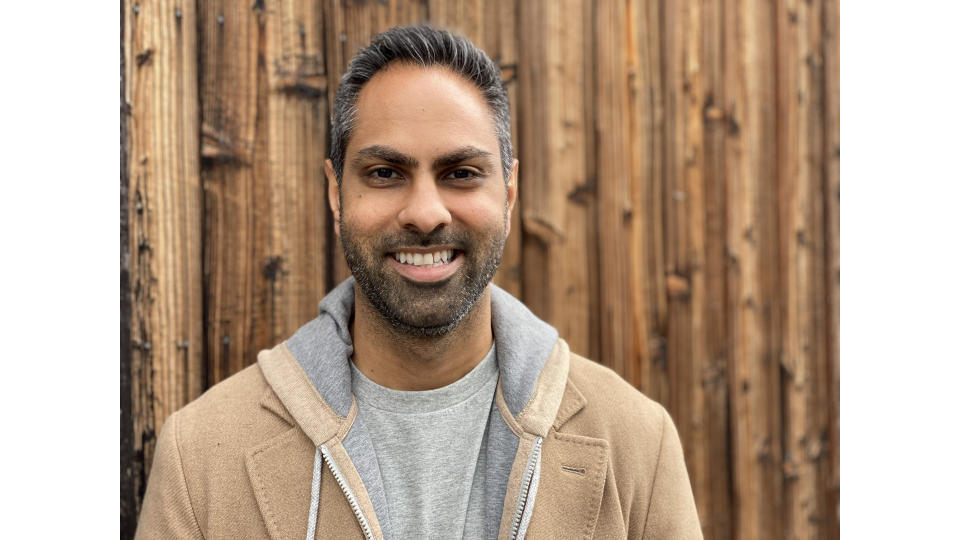Ramit Sethi: 3 Investing Questions That Will Help You Get Rich

Ramit Sethi’s New York Times bestseller, “I Will Make You Rich,” may seem to have a boastful title, but it carries some essential principles of basic finance that can indeed help you build wealth. Among other things, Sethi refers to the “three $30,000 questions” that can make a big difference in your financial life.
Find Out: I’m a Self-Made Millionaire: I Followed These 3 Dave Ramsey Rules To Get Rich
Learn More: 6 Genius Things All Wealthy People Do With Their Money
While there are many paths to investment success, Sethi says that focusing on these three questions can bring a serious and immediate transformation. Here are the investing questions Sethi says will help you get rich, along with an examination of how you can use them to make positive changes.
What Is Your Target Savings Rate?
Sethi encourages investors to think of their target savings rate first. This accomplished a number of goals. First, it forces investors to actually look at their income and expenses and come up with a reasonable savings rate. Second, it makes investors start the process of actually setting up an investment program instead of just thinking about it.
Sethi encourages an initial target savings rate of 10% to 20%, but the most important thing is to start saving something. Even if you can only start saving 5% of your income, begin at that level and then try to increase your savings rate by at least 1% per year. Ultimately, you can reach the recommended long-term savings rate of 10% to 20%.
Once you’ve decided on your target savings rate, Sethi says it’s essential to automate the process. This way, you don’t even have to think about saving at all — it automatically happens for you.
Read Next: 7 Things You Must Do To Start Making $1K a Month in Passive Income
How Much Are You Paying in Investment Fees?
Investment fees can cut into your returns more than you might imagine. According to Sethi, even just a 1% annual fee that you are paying to an advisor could result in a drop of 28% or more in performance.
As Sethi explains it, “In 35 years, with a low 0.2% management fee and assuming a 7% return, you’d have just over $2,000,000. But if you pay a financial advisor 1%,you’d only have $1,700,000. That’s more than $380,000 going into your advisor’s pockets in fees! By the way, if you pay 2%, that’s over $750,000 in fees! This is what I mean when I say that a 1% fee can cost you 28% of your lifetime returns.”
It’s important to note that for some investors, even this drag on performance may be worth it. If you have no understanding at all of how investing works, it’s entirely possible that the damage you could cause to your portfolio would be much more than the drag on your account value caused by investment management fees.
But Sethi believes that in the era of no-fee investing, with so much financial information available, you should be able to educate yourself enough about basic finance to cut out as many investment fees as possible. Over time, your return will be boosted significantly, even if you simply invest in a low-cost index fund.
What Is Your Asset Allocation?
Your asset allocation is a key component to your overall investment performance. According to Sethi, having a portfolio that fits your age and goals can put tens of thousands of dollars back into your pocket every year.
It all starts with defining your investment objectives and risk tolerance. Your investment objectives guide the types of assets that you should own in terms of broad categories, such as growth or income. Your risk tolerance determines how aggressive you can be with your portfolio while still sleeping at night. Once you have these in place, you can set your asset allocation.
Sethi agrees with most financial experts in saying that the younger you are, the more risk you can generally bear. This is because you have a much longer timeframe to recover from temporary market setbacks. Sethi says investors can generally handle having a stock-heavy portfolio into their 40s or early 50s, at which point they might want to add more bonds to the mix in the quest for greater stability.
Specifically, Sethi suggests this asset allocation by age:
Age 35: 90% stocks, 10% bonds
Age 45: 90% stocks, 10% bonds
Age 55: 69% stocks, 31% bonds
Age 65: 53% stocks, 47% bonds
Although all investors are different, Sethi stresses that you don’t have to make your asset allocation overly complicated to succeed.
The Bottom Line
Sethi’s three simple questions in and of themselves will not get you rich. However, they’re an important step toward lifelong wealth. Financial education, investment planning and automation are all tools you can use as stepping stones towards becoming rich.
More From GOBankingRates
I Was Retired, but Wasted Big Money On These 3 Things and Had To Go Back To Work
5 Reasons You Should Consider an Annuity For Your Retirement Savings
4 Reasons You Should Be Getting Your Paycheck Early, According to An Expert
This article originally appeared on GOBankingRates.com: Ramit Sethi: 3 Investing Questions That Will Help You Get Rich

 Yahoo Finance
Yahoo Finance 